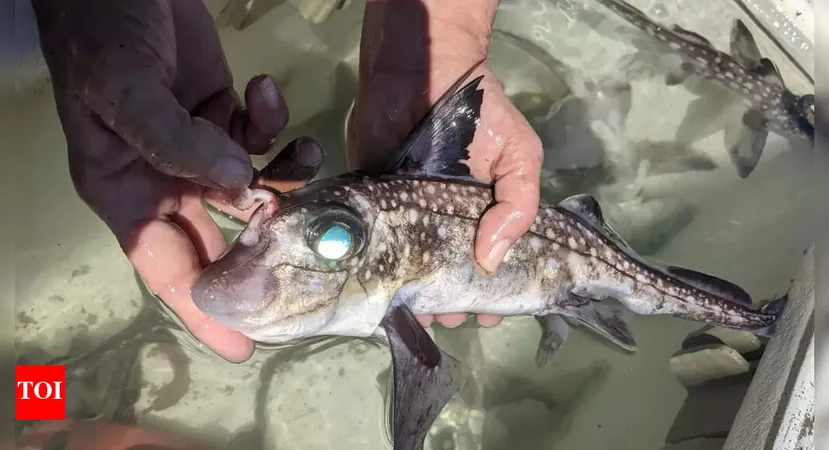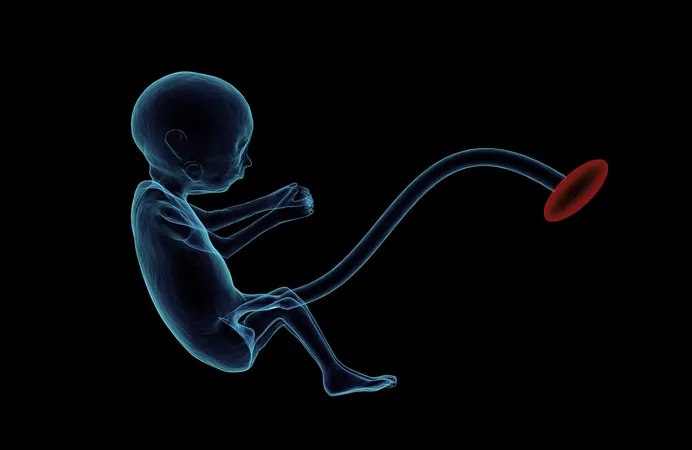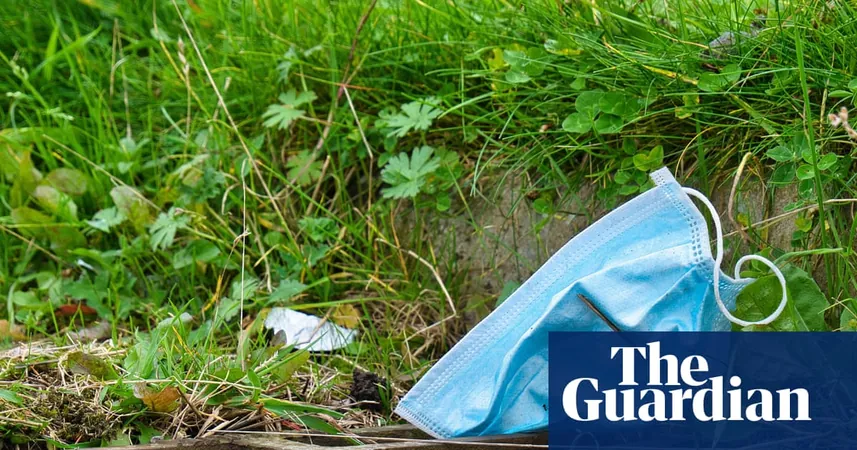
Unveiling the Surprising Secrets of Ghost Sharks: Teeth on Their Foreheads!
2025-09-09
Author: Wei Ling
A Shocking Discovery in the Deep Seas
Off the enchanting coast of Washington, scientists have stumbled upon a revelation that sounds like it's straight out of a sci-fi novel: male spotted ratfish, commonly known as ghost sharks, have teeth growing right on their foreheads! This groundbreaking finding challenges everything we thought we knew about dental evolution, proving that teeth can sprout in unexpected places.
Meet the Ghost Shark: A Fish with a Twist
Ghost sharks, or chimaeras, are ancient relatives of sharks and rays, and the spotted ratfish (Hydrolagus colliei) is among the most prevalent. Residing in the mysterious depths of Puget Sound, these remarkable creatures can grow up to two feet long, featuring slender tails that account for nearly half of their length. Although they have 'shark' in their nickname, true sharks are not their direct relatives—they share a common ancestor that roamed the oceans hundreds of millions of years ago.
Teeth Where You'd Least Expect Them!
In a stunning twist, only adult male ghost sharks develop a unique appendage known as the tenaculum, which emerges between their eyes. During courtship, this peanut-shaped feature transforms, becoming barbed and covered in rows of retractable teeth. Astonishingly, these forehead teeth are formed from the same tissues as oral teeth and mirror the genetic expressions found in shark jaws, hinting at a deeply rooted evolutionary heritage dating back over 315 million years.
Mating Like No Other: The Forehead Teeth Advantage
These retractable teeth are not just for show—they serve a crucial purpose during mating rituals. As males grasp onto females with their tenaculum, they create a strong hold that sometimes leaves scars on their partners' fins. This remarkable adaptation showcases evolution's ability to repurpose biological tools, using the genetic blueprint for tooth development in a whole new context.
A Game-Changer for Evolutionary Science
For years, scientists believed that teeth were strictly confined to the mouth, but this discovery uproots that notion entirely. Dr. Gareth Fraser, leading the research team, explains that this observation is an example of evolutionary 'bricolage,' where organisms creatively repurpose existing genetic frameworks. It opens the door to new possibilities about how vertebrates have evolved over time.
Exploring the Past: A Journey Through Time
Utilizing fossil analysis, CT scans, and genetic testing, researchers are piecing together the intriguing history of the ghost shark’s tenaculum. This study suggests that early vertebrates might have experimented with placing teeth outside the mouth long before sharks evolved their specialized dental structures. Dr. Karly Cohen emphasizes that the more we delve into the anatomy of vertebrates, the more we are likely to discover teeth in surprising locations.



 Brasil (PT)
Brasil (PT)
 Canada (EN)
Canada (EN)
 Chile (ES)
Chile (ES)
 Česko (CS)
Česko (CS)
 대한민국 (KO)
대한민국 (KO)
 España (ES)
España (ES)
 France (FR)
France (FR)
 Hong Kong (EN)
Hong Kong (EN)
 Italia (IT)
Italia (IT)
 日本 (JA)
日本 (JA)
 Magyarország (HU)
Magyarország (HU)
 Norge (NO)
Norge (NO)
 Polska (PL)
Polska (PL)
 Schweiz (DE)
Schweiz (DE)
 Singapore (EN)
Singapore (EN)
 Sverige (SV)
Sverige (SV)
 Suomi (FI)
Suomi (FI)
 Türkiye (TR)
Türkiye (TR)
 الإمارات العربية المتحدة (AR)
الإمارات العربية المتحدة (AR)